Wrapping up my series on the best photo spots from my trip to the Kinnaur and Spiti valley of Himachal Pradesh!
Escaping the daily grind, we started on a week-long adventure in the majestic Greater and Trans Himalayan mountains of Himachal Pradesh.
The first day was a treat for my taste buds as we indulged in a scrumptious lunch at a humble dhaba (roadside eatery) near Chail, a small hill town near Shimla.
Shimla to Sangla
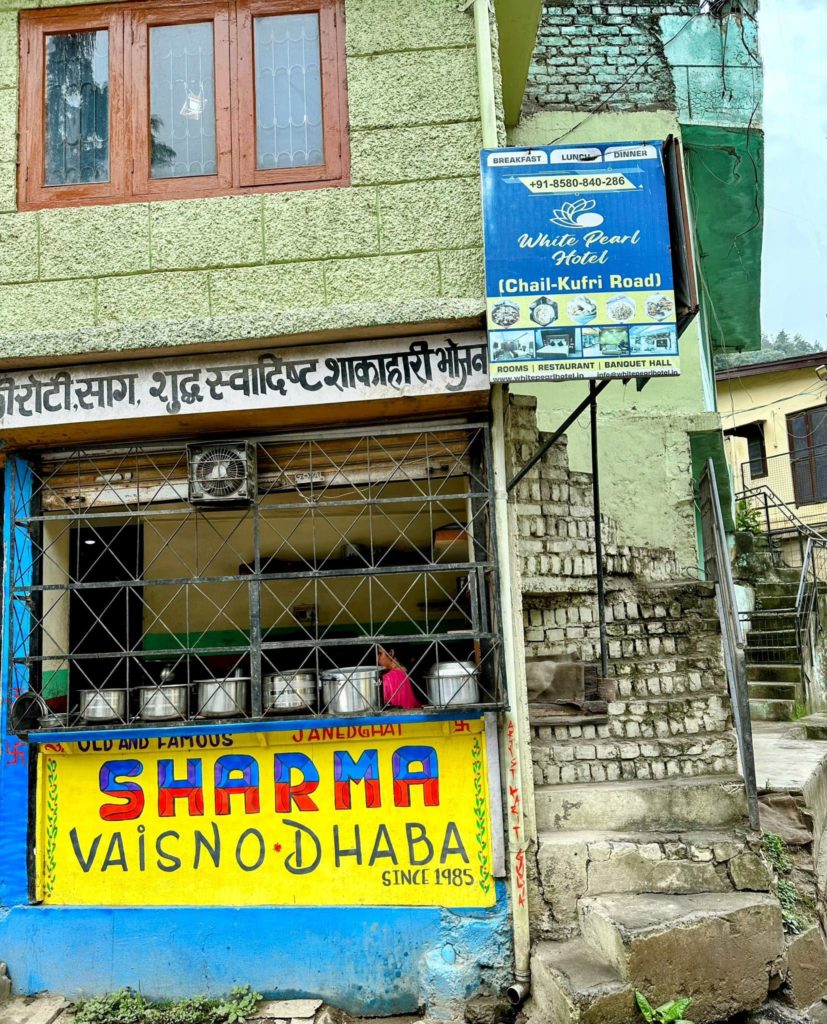
However, the journey took a literal downhill turn afterward. We encountered a steep descent and then a challenging ascent due to an 8 km section of the highway being closed. This detour added an extra two hours to our journey. Yet, the breathtaking scenes along the way made up for the inconvenience.
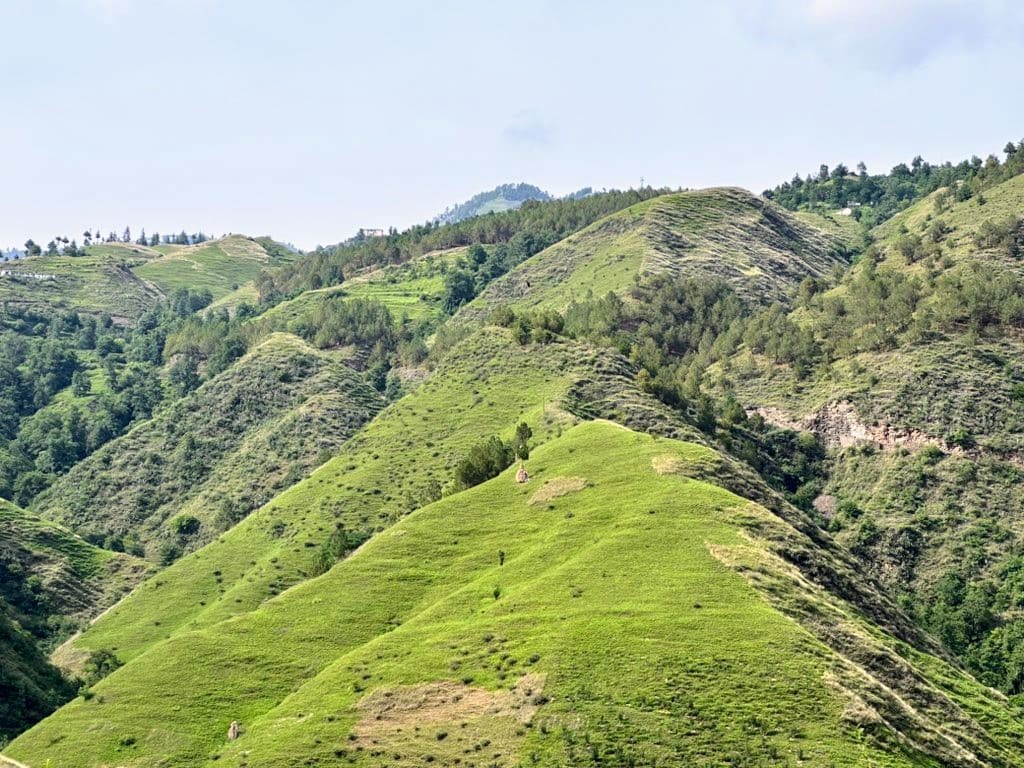
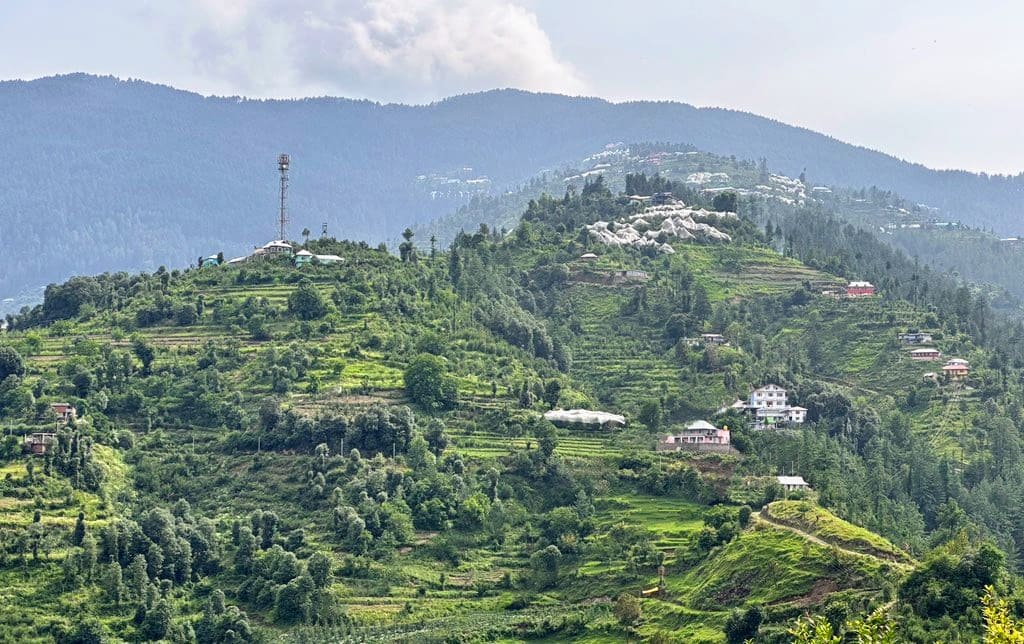
Finally, after a long and eventful drive, we arrived in Narkanda, where I was greeted by a mesmerizing view that made all the fatigue melt away.
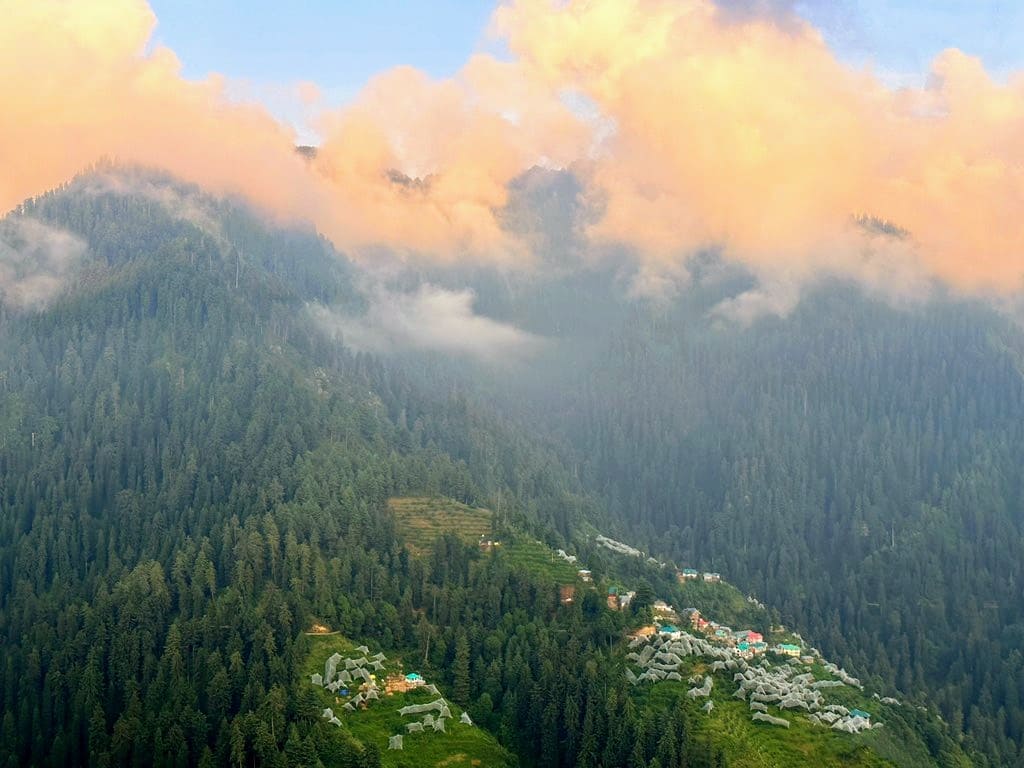
The following day greeted us with cloudy skies and drizzles as we set off after breakfast. Once again, we were treated to awe-inspiring scenery as we slowly ascended to higher altitudes. When the altitude sickness started to creep in, we made an early stop for lunch, relishing in mouthwatering makki ki roti (cornbread) and sarson ka saag (mustard greens).
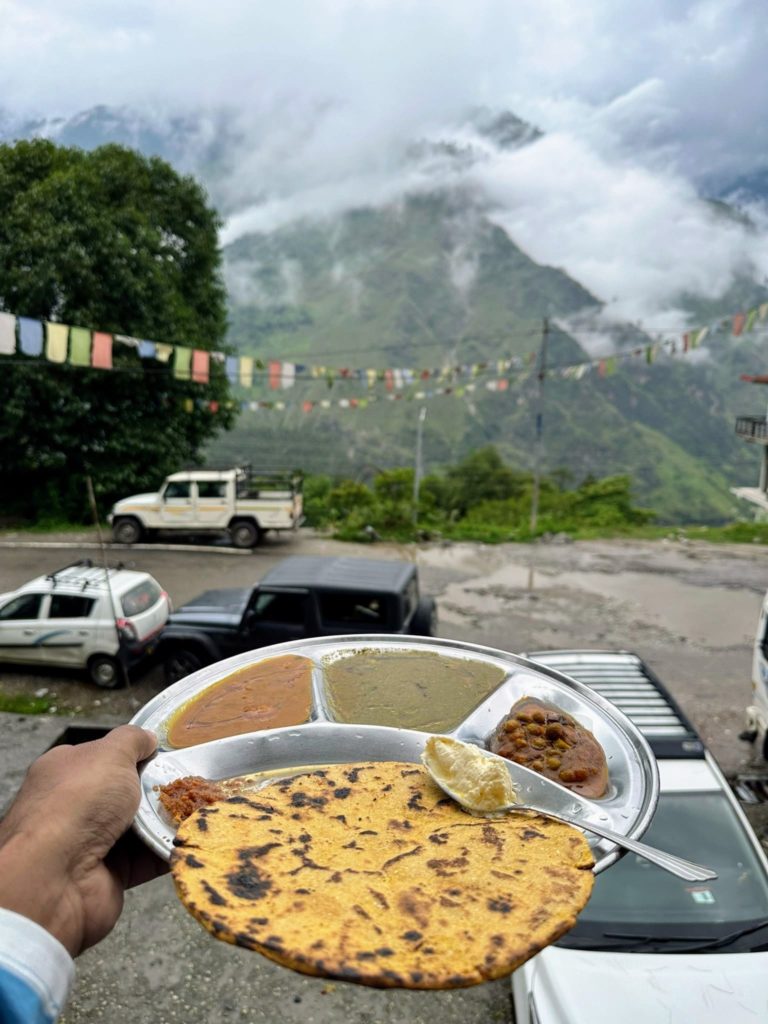
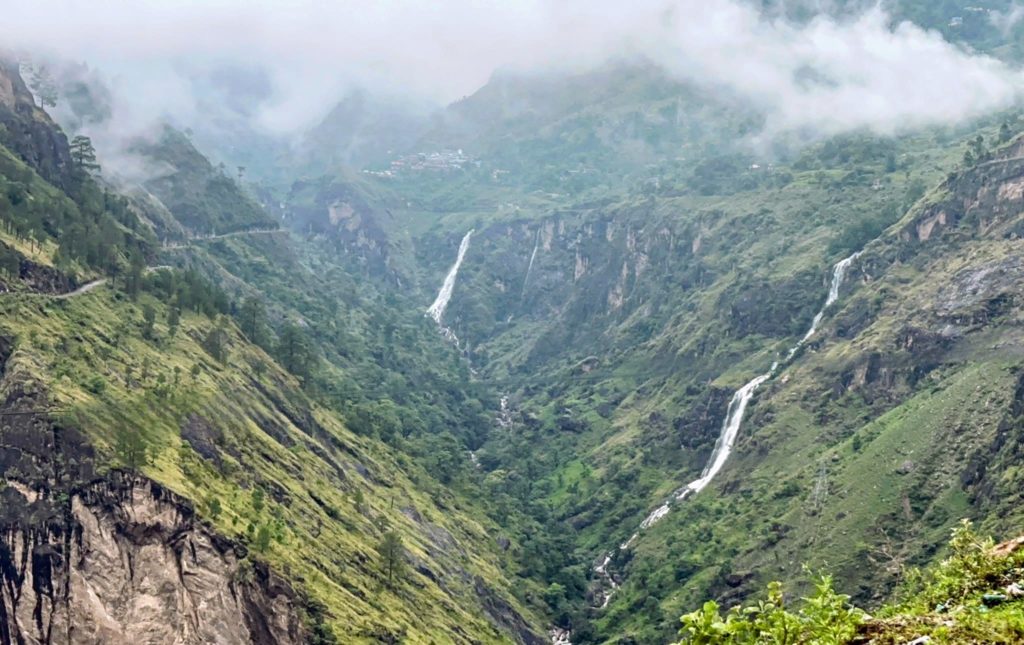
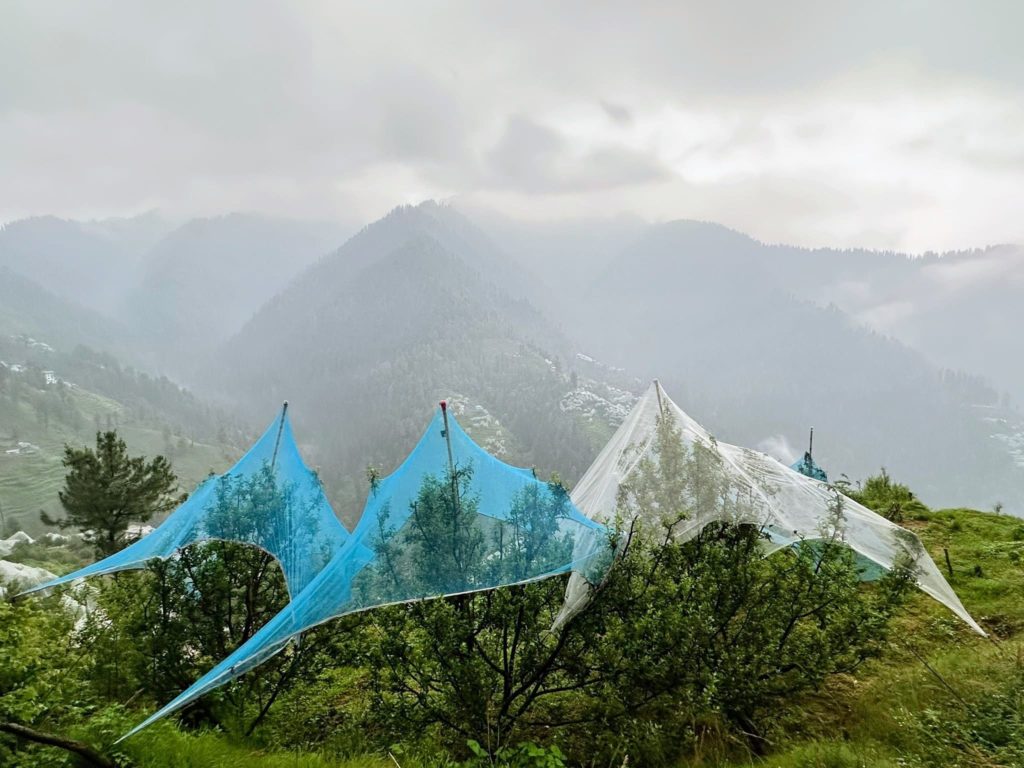
After lunch, we ventured into Kinnaur district. It is a customary ritual for to offer prayers at the Taranda Maa temple. We sought a safe journey ahead, given the challenging roads and terrain. After a few arduous hours, our efforts paid off as we marveled at the stunning Sangla valley.

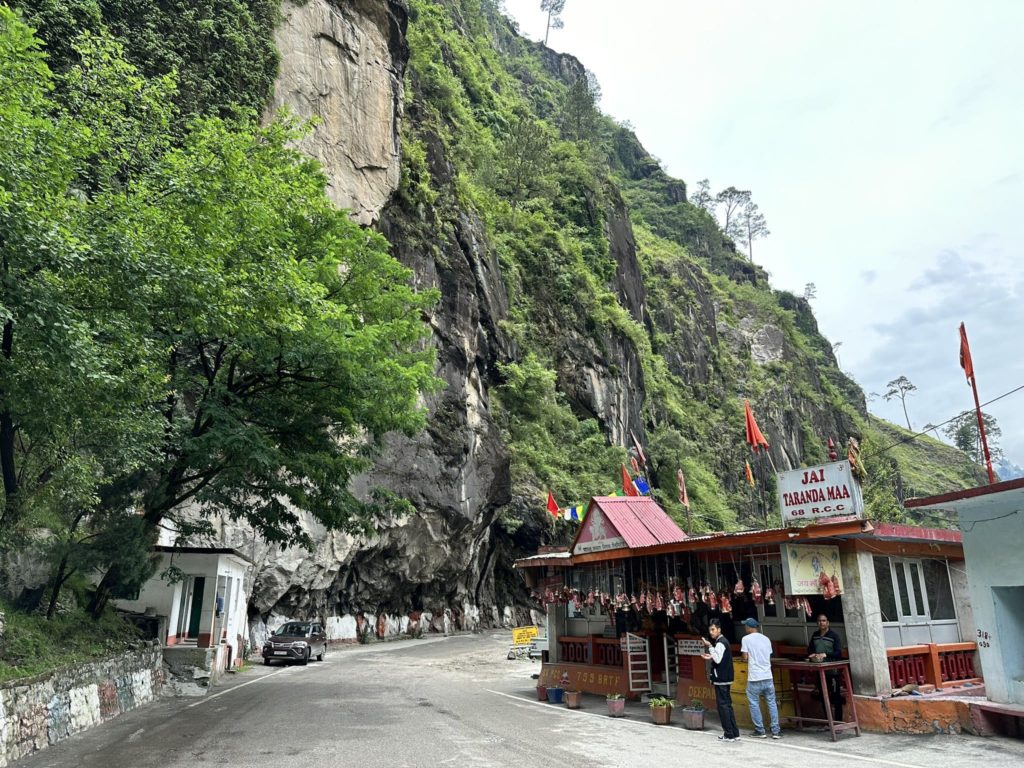
Our accommodation was nestled near a quaint village called Batseri, just outside Sangla. It was a charming place that took us on a nostalgic journey with a short hike across a bridge over the Baspa River.
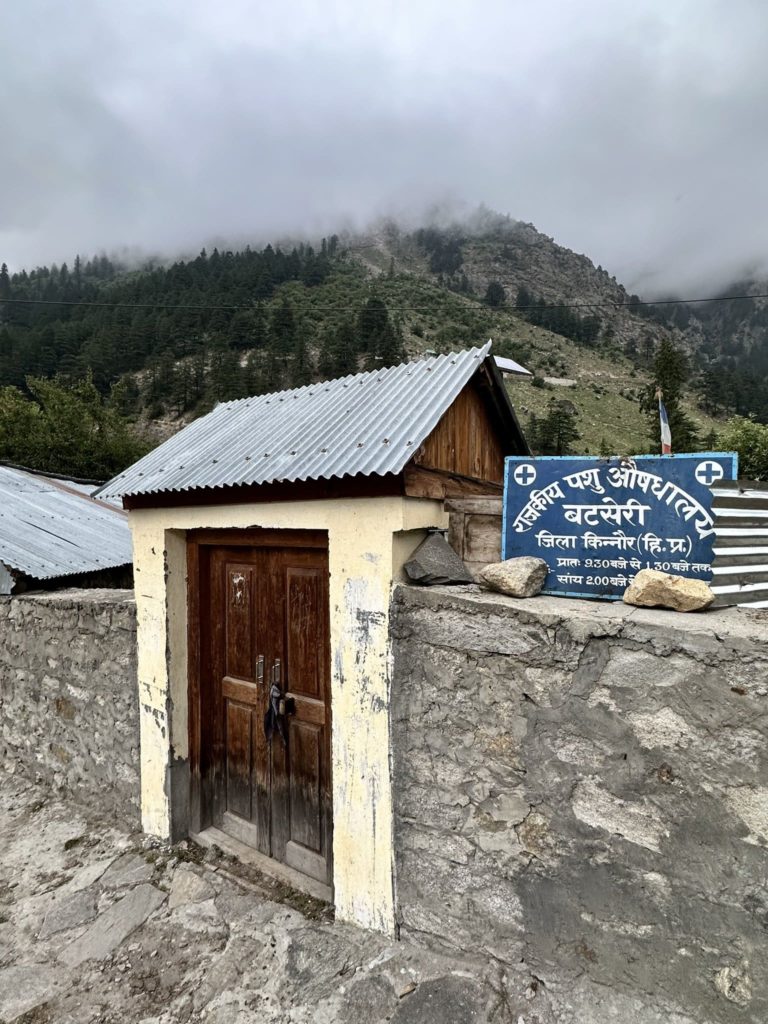
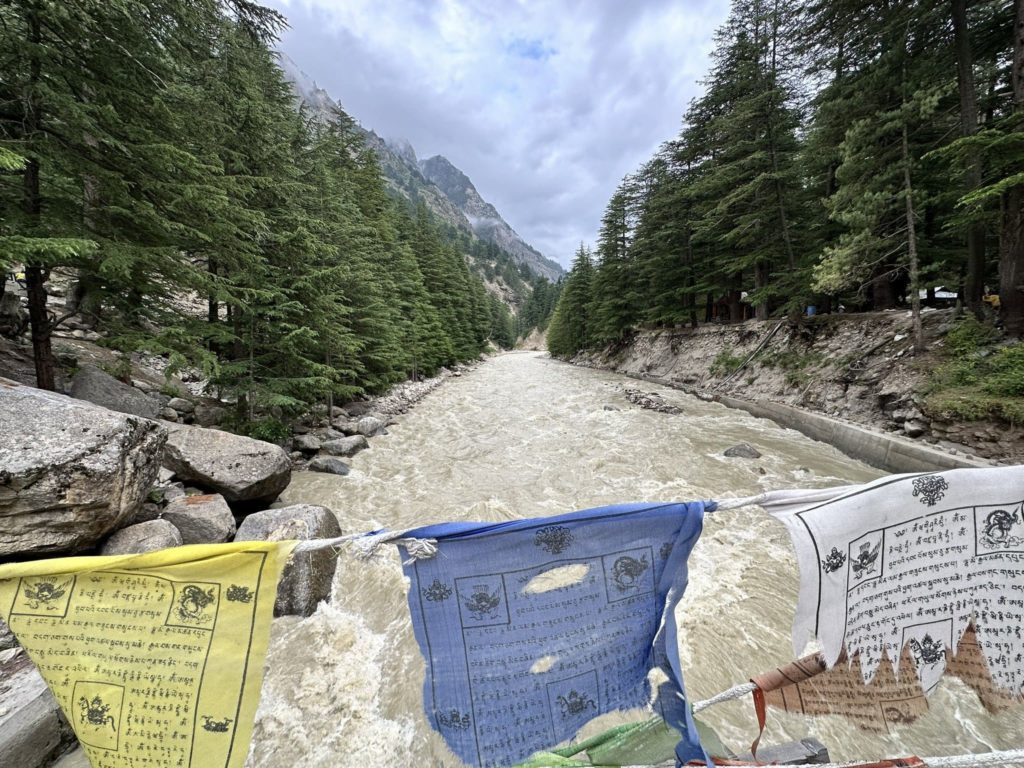
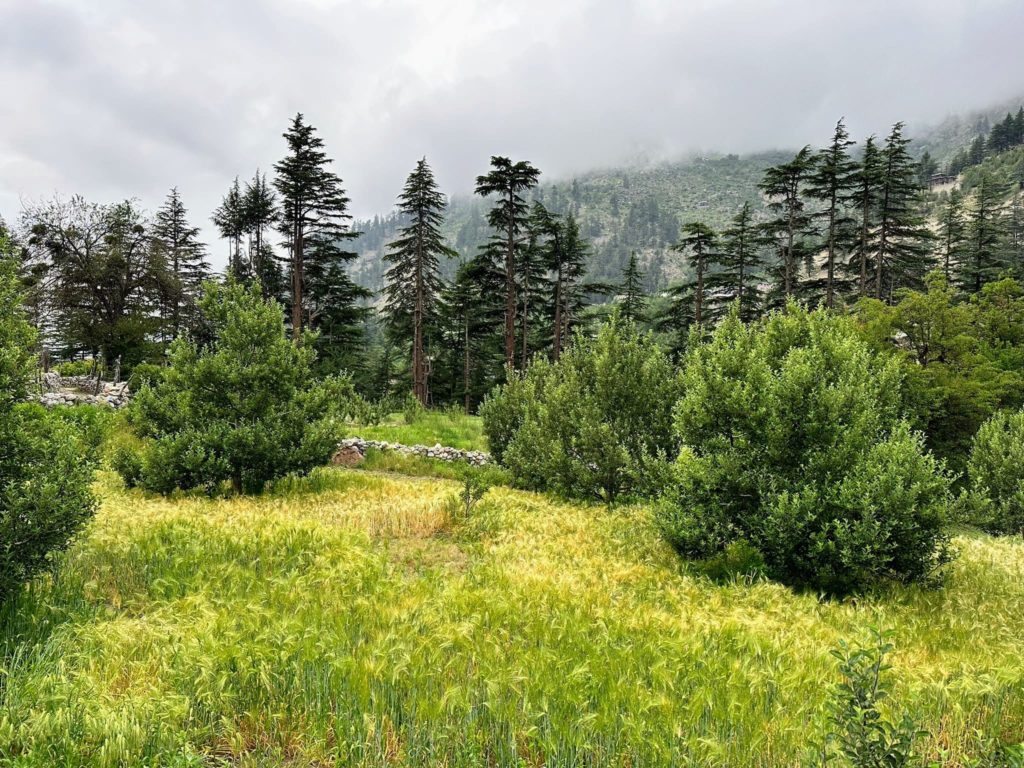
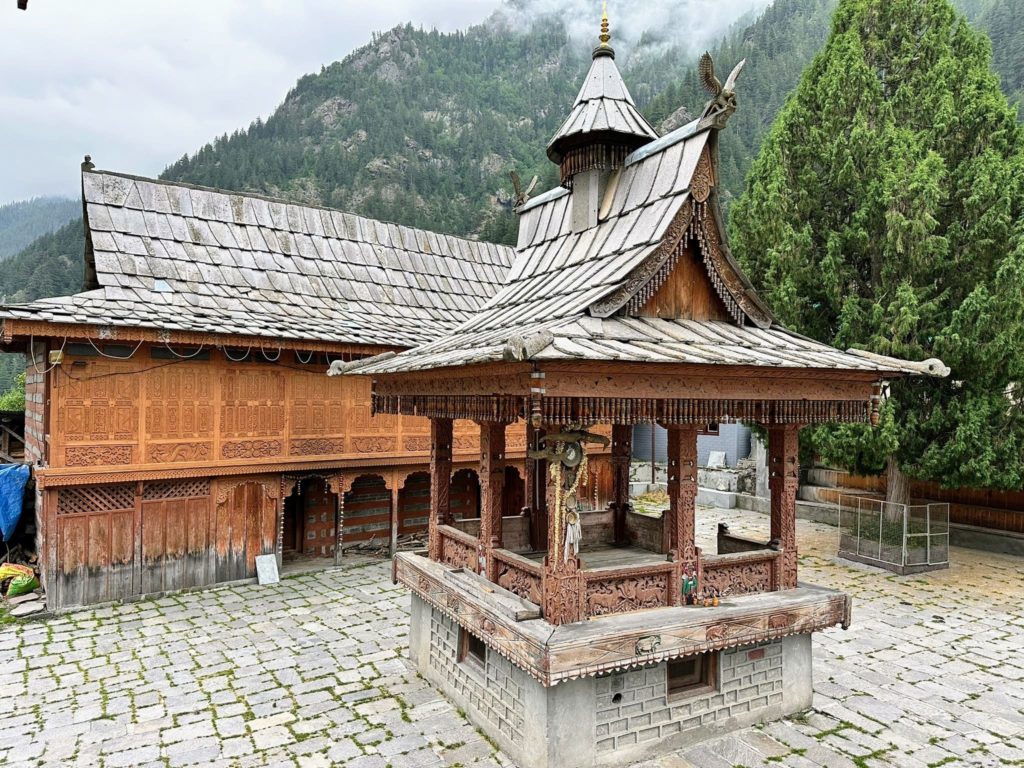
The next day, we began our ascent from Batseri, encountering numerous streams gracefully flowing alongside the road. The melting snow created clear paths from the mountains to the valleys below, offering a captivating sight.
Chitkul
At an altitude of 11,320 feet, we reached Chitkul, affectionately known as the last Indian village. We saw Bhoj Patra tree logs here. Interestingly, Bhoj Patra, the Himalayan birch, was used as paper in ancient times.
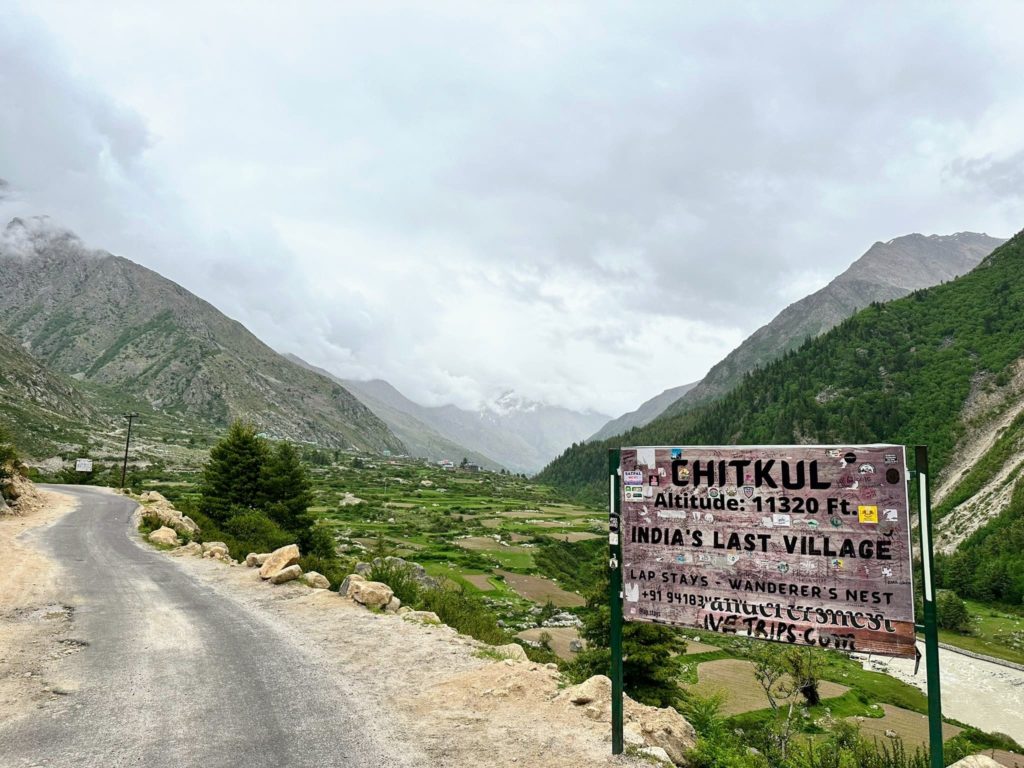
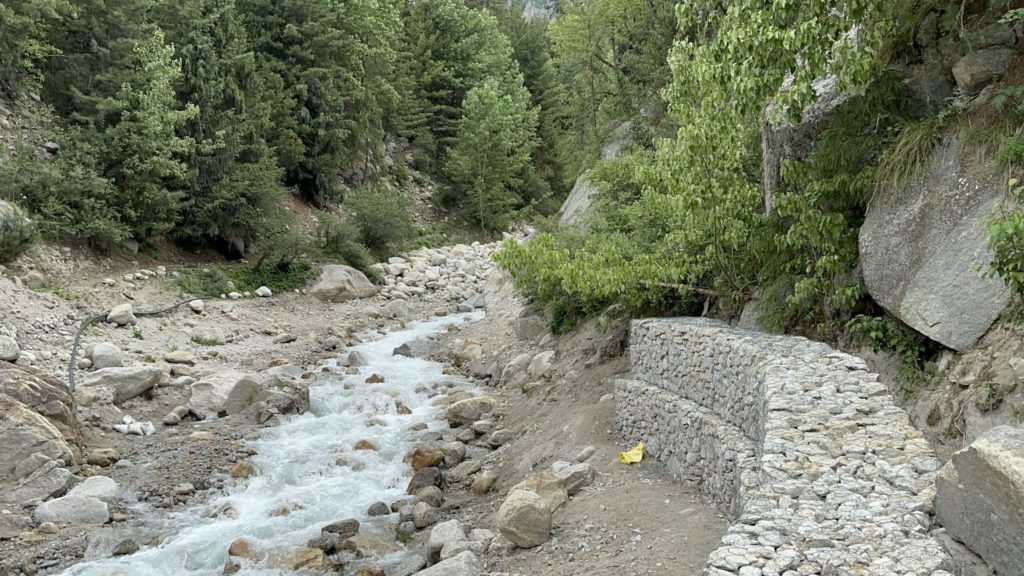
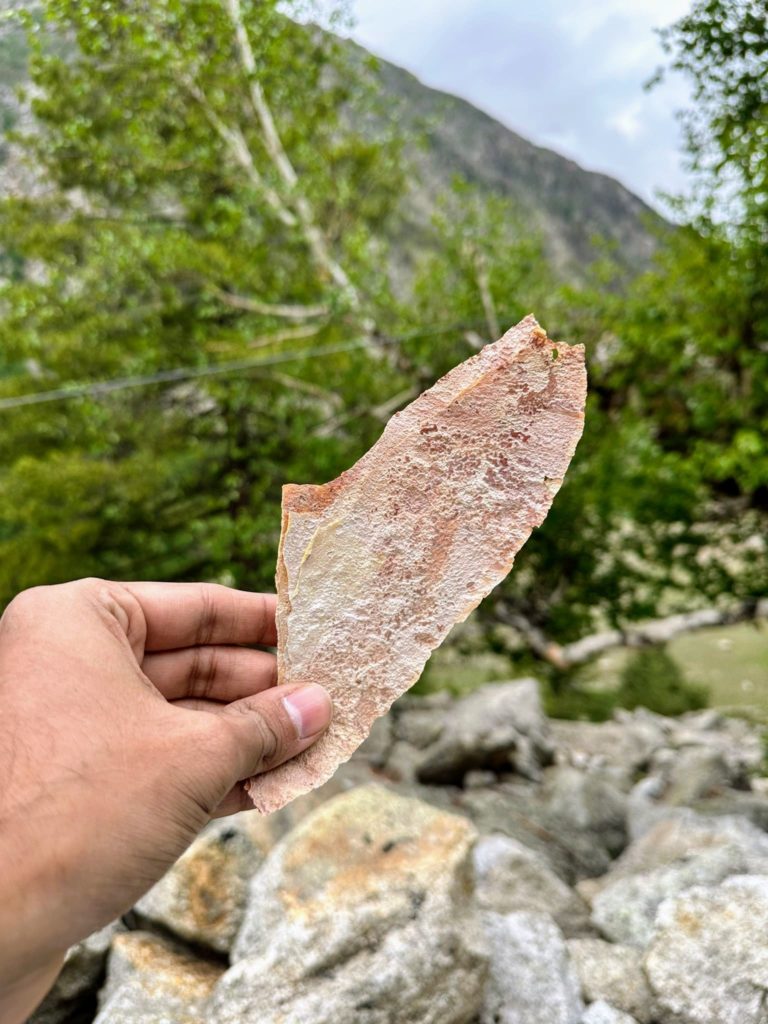
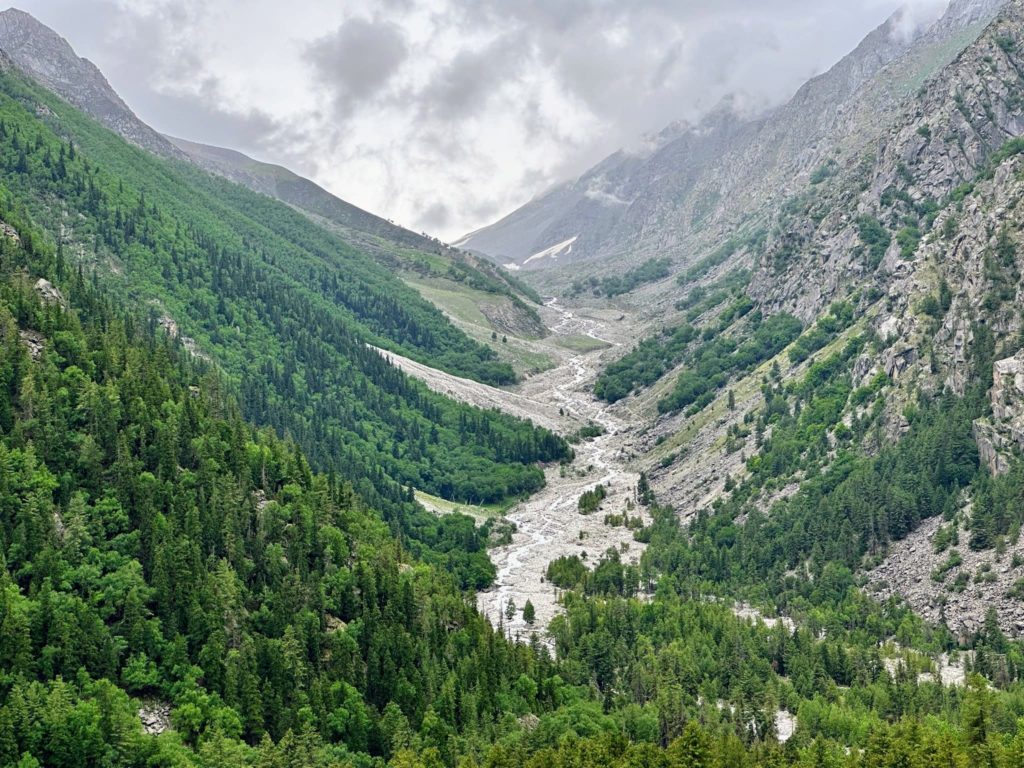
After exploring Chitkul, we took a moment to relax by one of the roadside streams, chilling both figuratively and literally. Our next stop was Rakchham village, where we discovered a vast open meadow with small streams meandering through it.
Kalpa
With that, we bid farewell to the enchanting Sangla valley and made our way to Kalpa for an overnight stay. Our room provided breathtaking views.
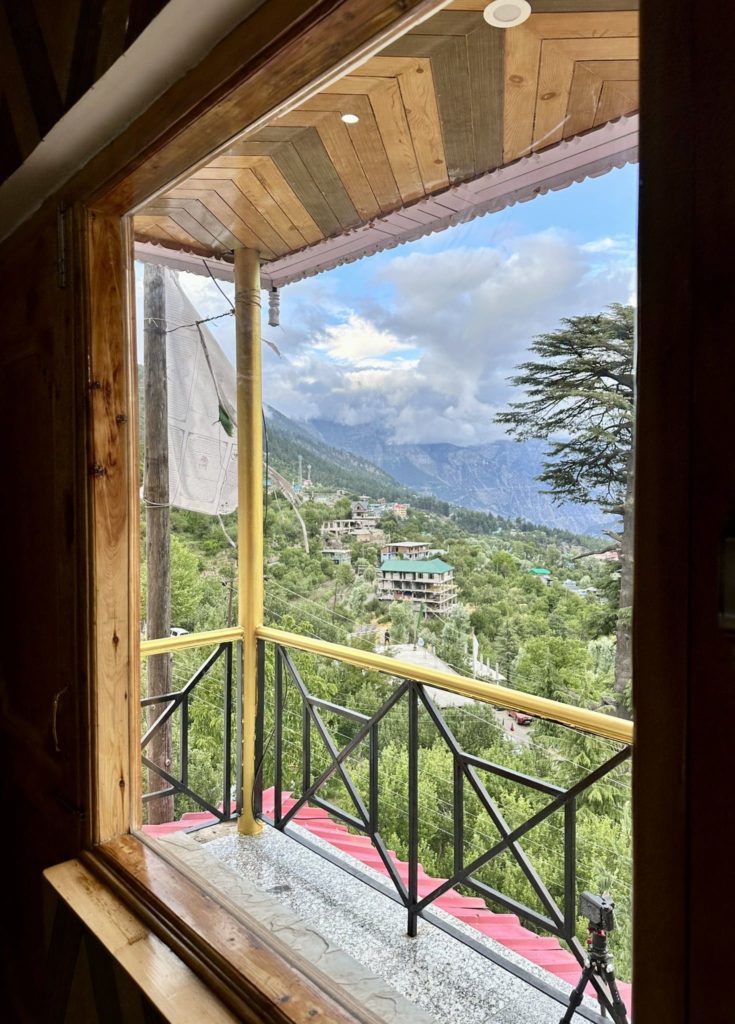
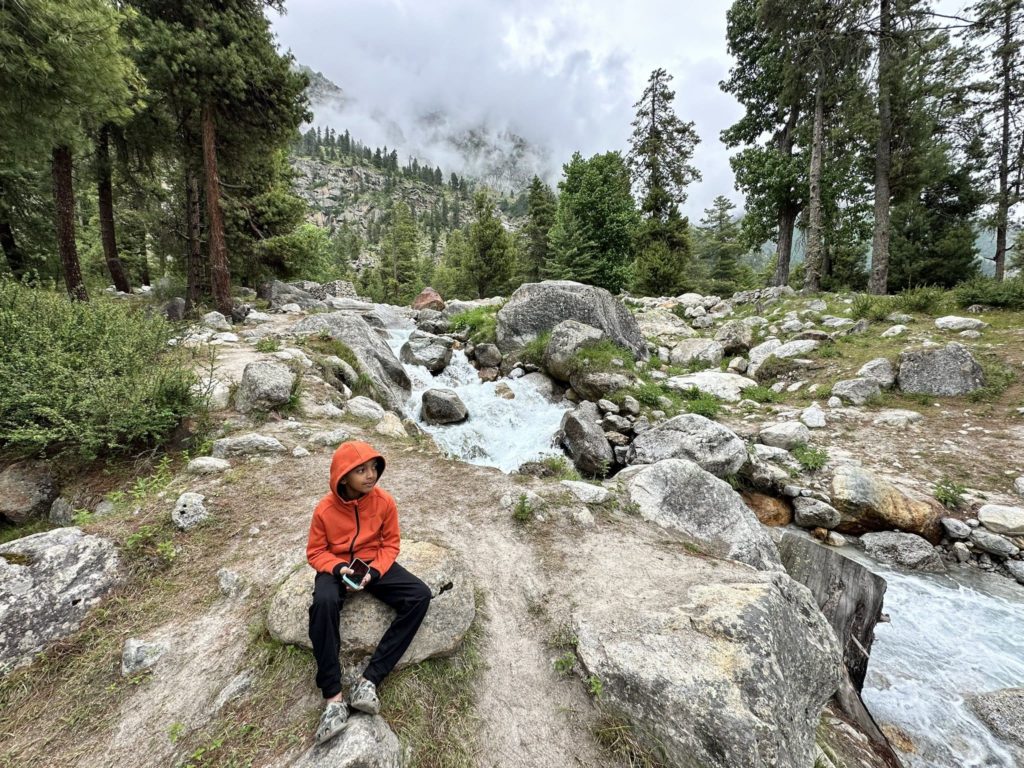
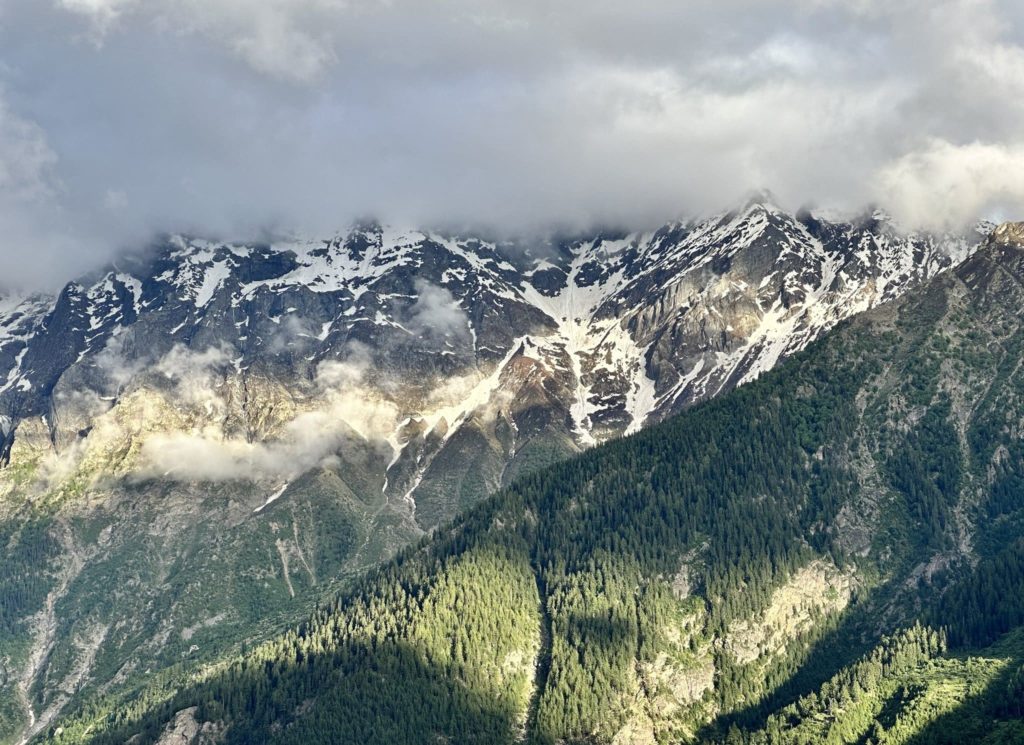
The next morning, we woke up to the magnificent sight of the Kinner Kailash Shivalinga, visible right from our hotel in Kalpa.
Kalpa to Tabo
Our journey from Kalpa to Tabo took us through a dramatic change in landscape as we left the Khab Sangam, the confluence point of the Sutlej and Spiti rivers. From there, we followed the Spiti River, and the road remained in excellent condition until Nako.

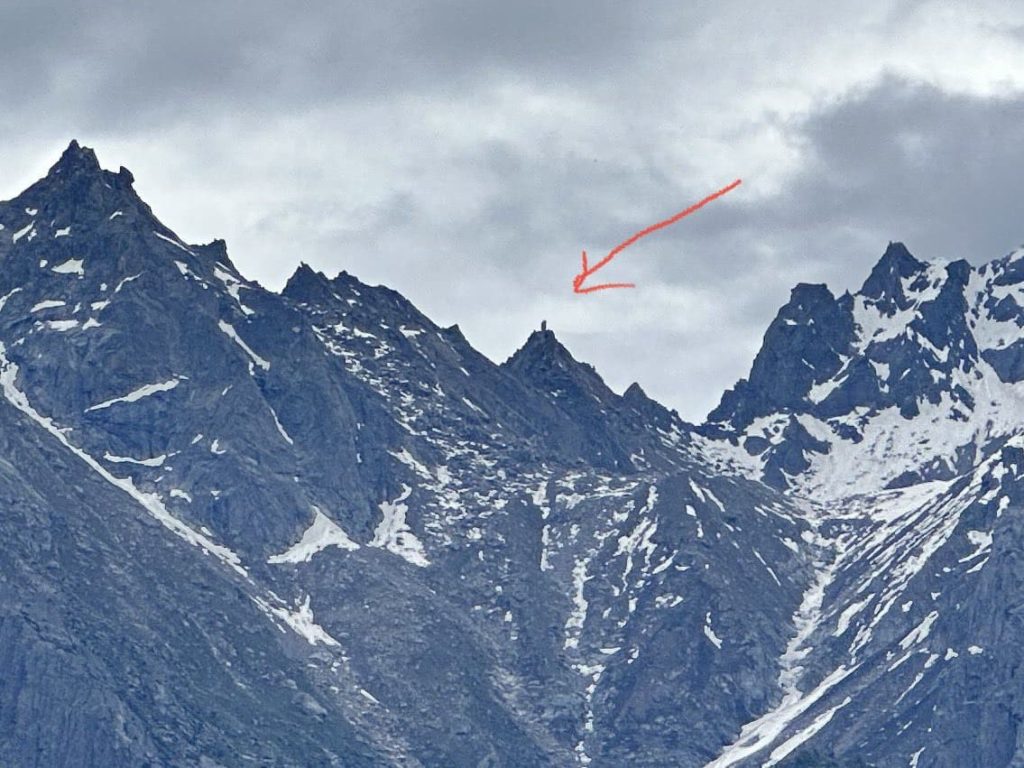
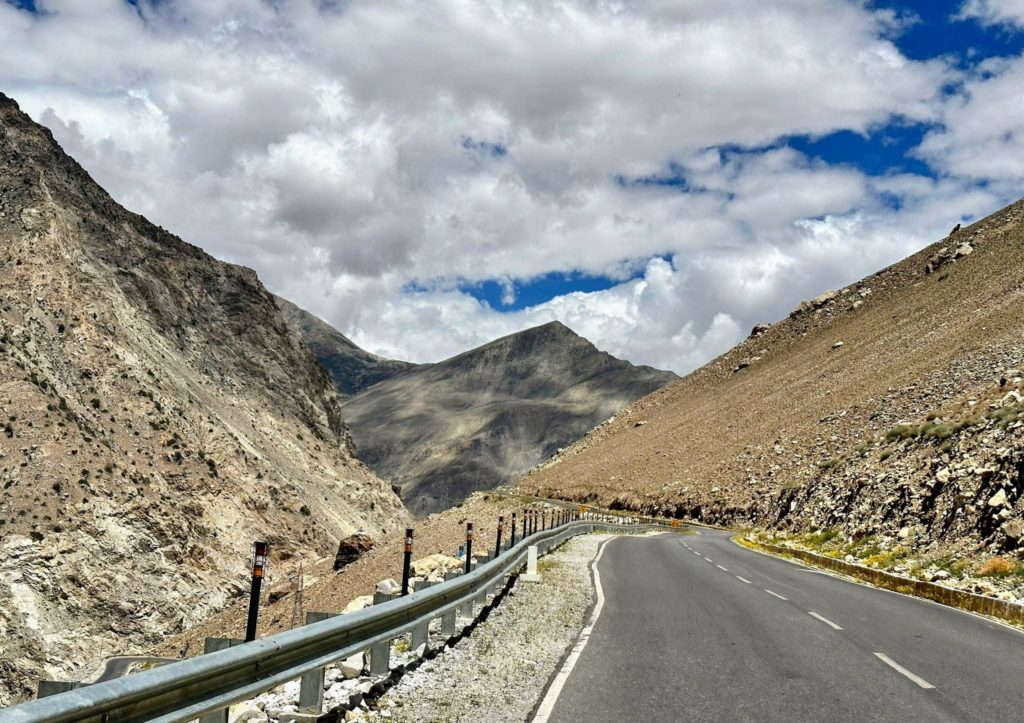
After visiting the sacred lake at Nako, we ventured to Gue Monastery, where there wasn’t much to see apart from Gue Stupa, mummy of Sangha Tenzin and our phones surprisingly catching Chinese signals.
Towards the end of the day, we reached Tabo, a small yet delightful town that stole the title of the best place we had visited so far.
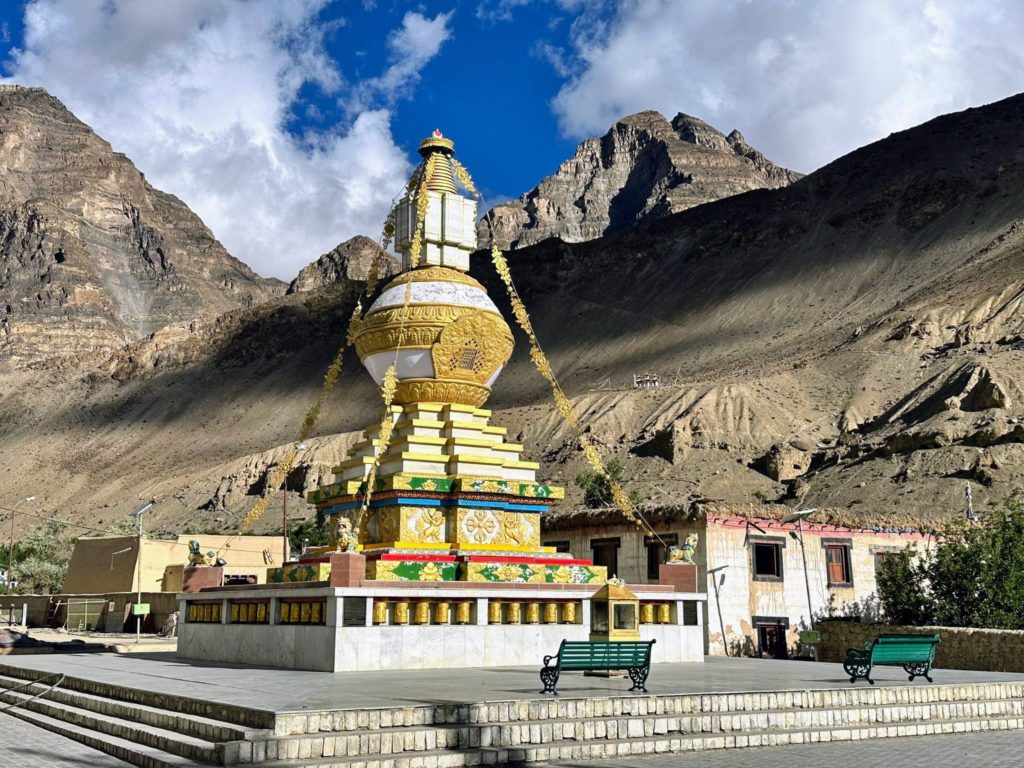
During our stay in Tabo, we found a cozy spot just outside the town, right beside the Spiti River. We spent a lot of time on the terrace, capturing stunning photos, while savoring pakodas (Indian fritters) and chai.
A helipad located 200 meters away provided an excellent vantage point for stargazing. We also took a walk to an ancient monastery, which looked enchanting in the morning light.
Tabo to Kaza
Continuing our journey, we reached Kaza from Tabo, exploring the usual spots like Chicham Bridge, Kibber, Kee Monastery, and Langza village.
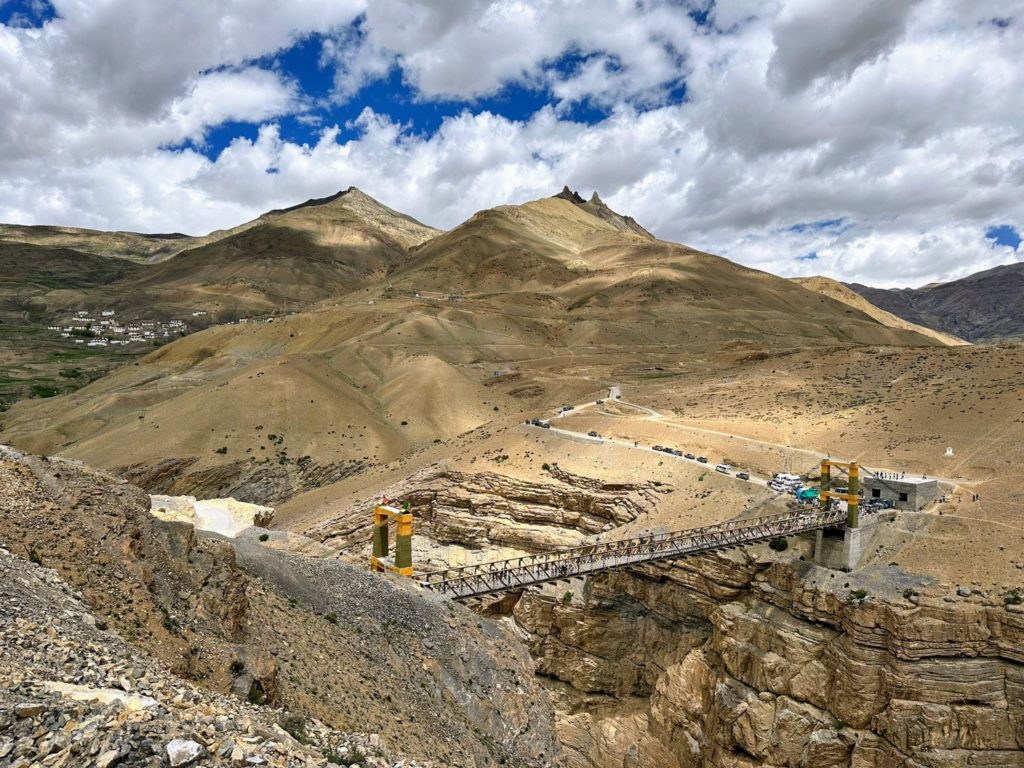
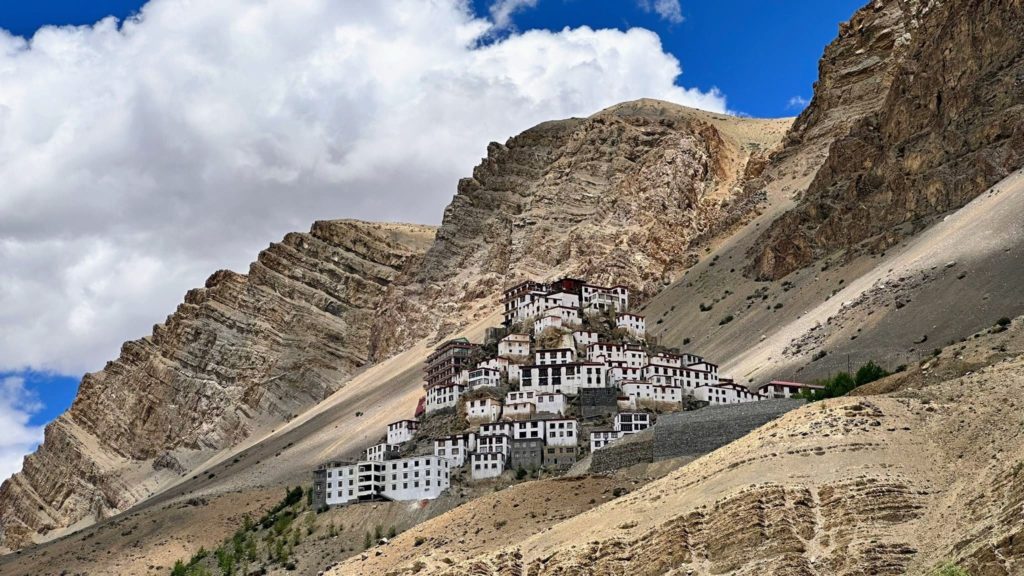

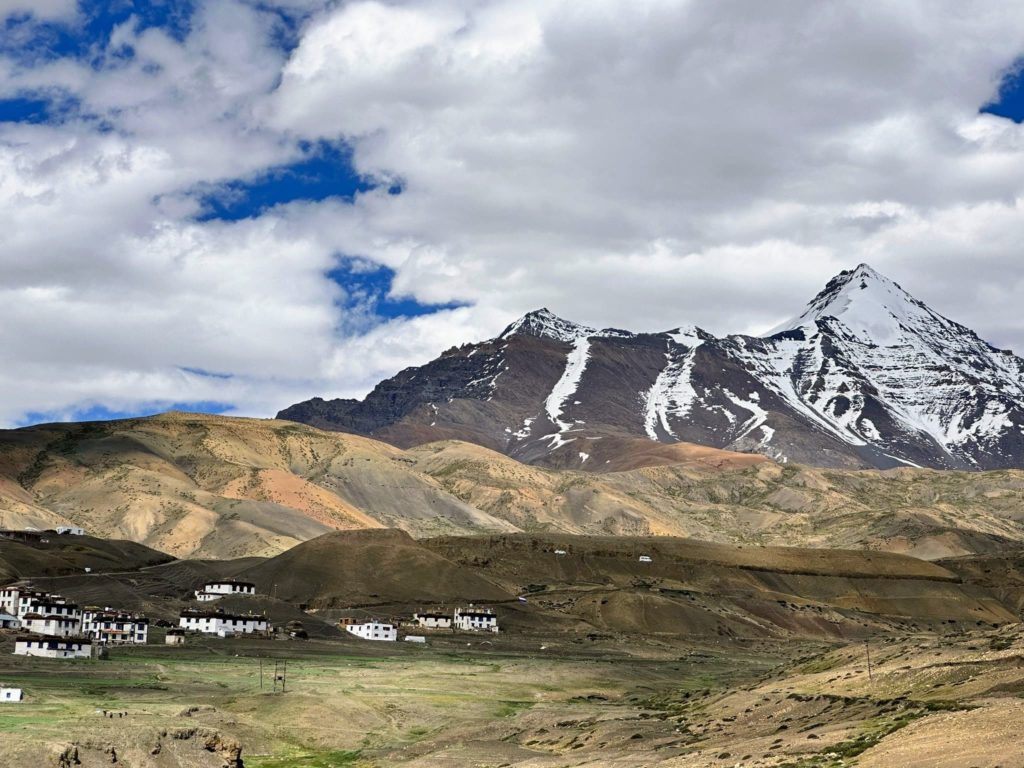
Langza
Langza village exudes a fairy-tale charm, with its 40 cozy homes set against the backdrop of the mighty Chau Chau Kang Nilda peak. While the village is famous for its enormous Buddha statue, staying there at an altitude of 14,400 feet wasn’t the most comfortable experience. However, the awe-inspiring scenery made it all worthwhile.
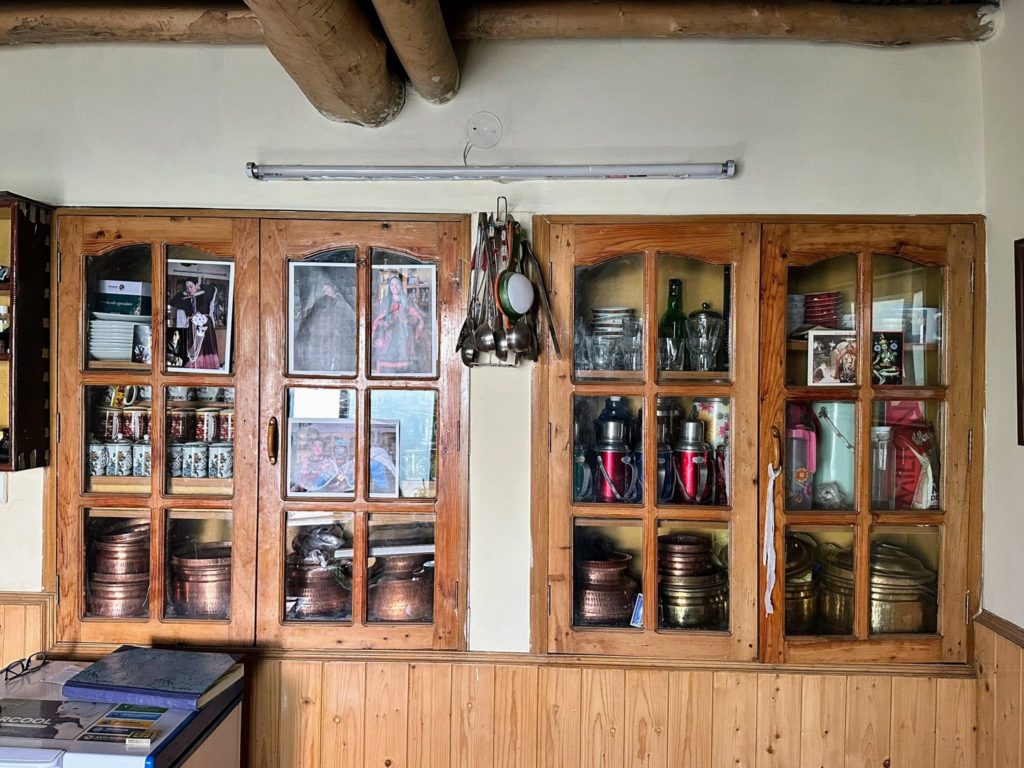
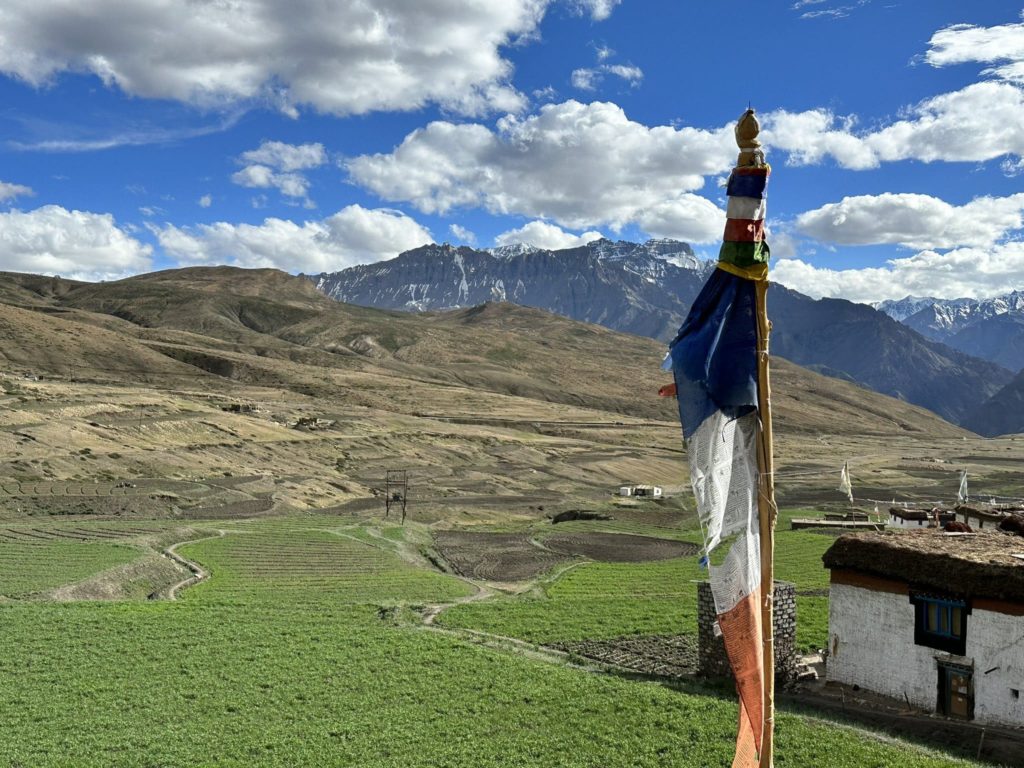
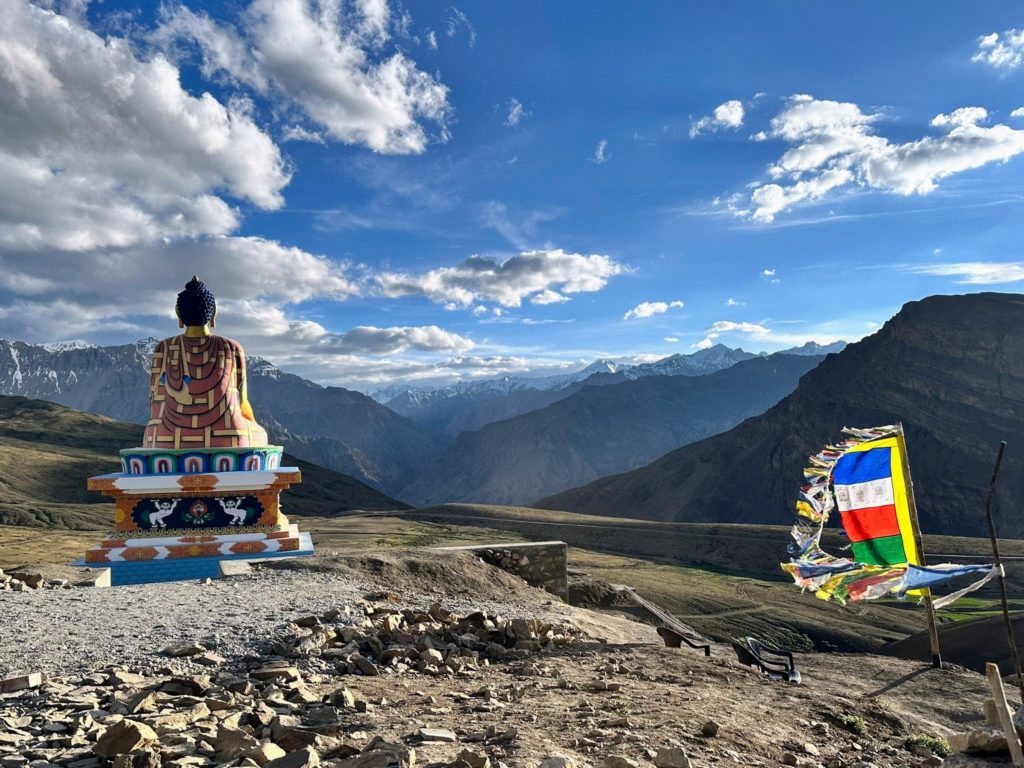
In Langza, I reluctantly gave up the idea of capturing starry skies and opted for an early night’s sleep after dinner. With a throbbing head and a sluggish body, I found solace in the bright moonlight. Around 3 am, I woke up with a parched throat and sipped some water. To my amazement, the moon had set, and through the window, I could witness the breathtaking Milky Way with my naked eye!
Chandratal lake
Unfortunately, the lack of sleep for the sake of capturing the Milky Way took its toll on me. I fell ill and couldn’t fully enjoy Chandratal, where the weather was cloudy, windy, and cold. It was a shame to be indoors for most of my time in such a beautiful place.

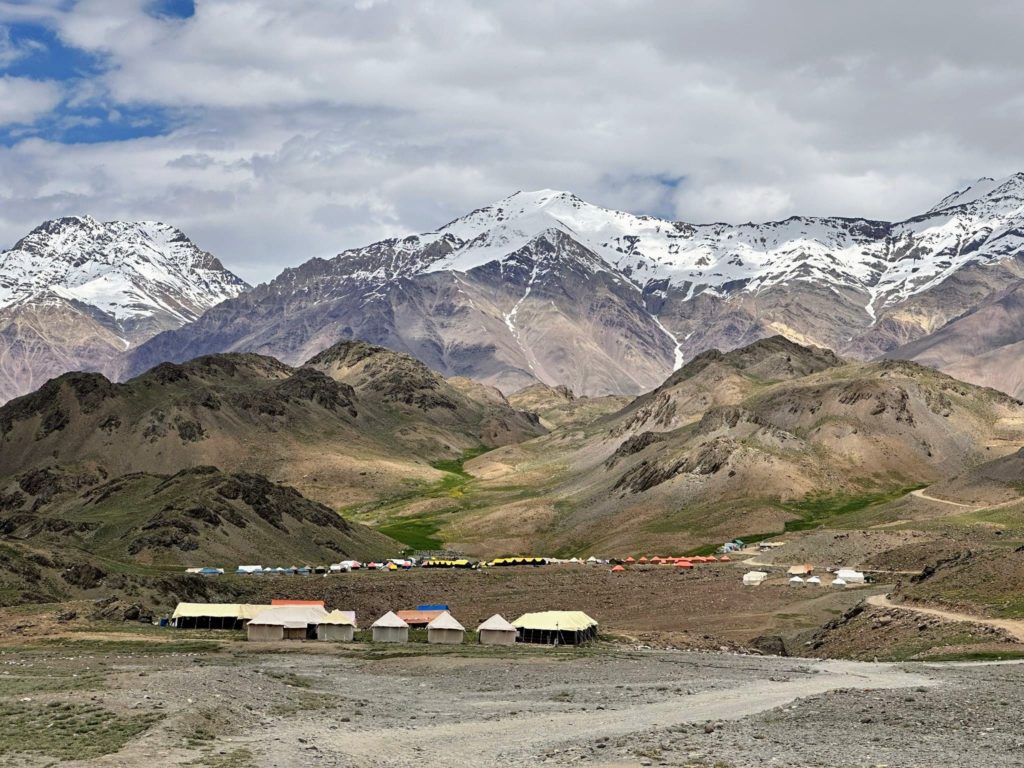
Chandratal to Manali
The journey from Chandratal to Manali was physically demanding but visually rewarding. A must-visit spot along the way is Chacha-Chachi Dhaba in Batal, where I savored the best Aloo Parantha (potato-stuffed flatbread).
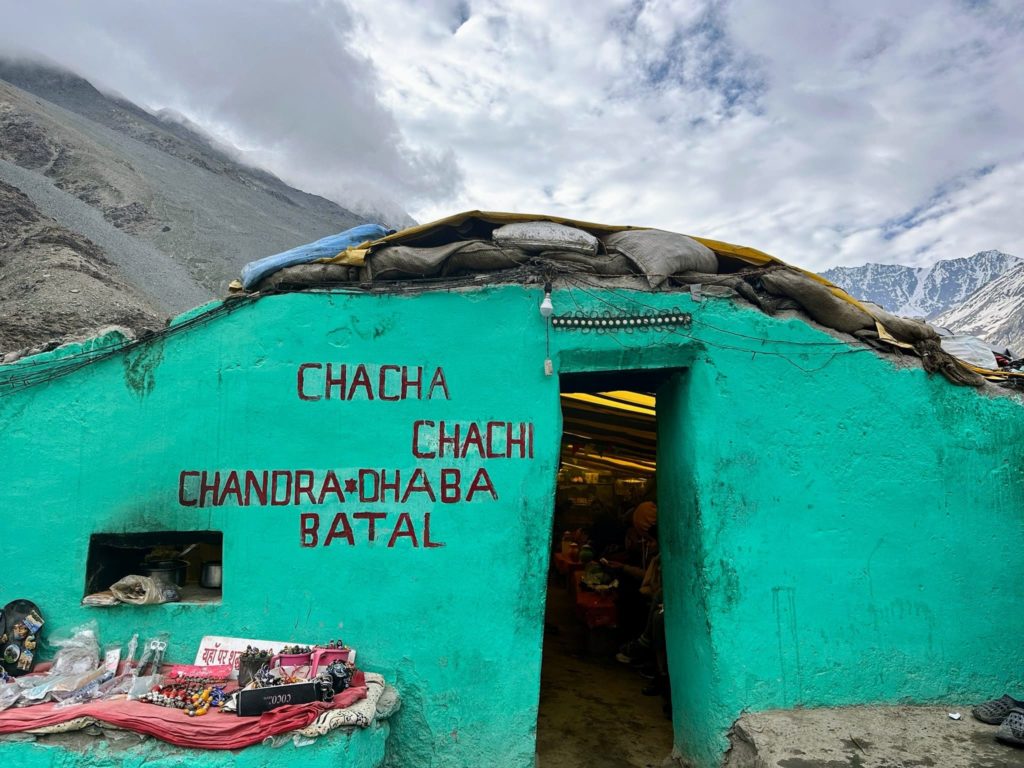
The road is non-existent at some places and, sometimes, the color of the river beside the road matched that of the road itself. We navigated around cars stranded in water and even encountered traffic jams!
- Top Photo Spots on Spiti Valley (Circuit) Road Trip – July 12, 2023
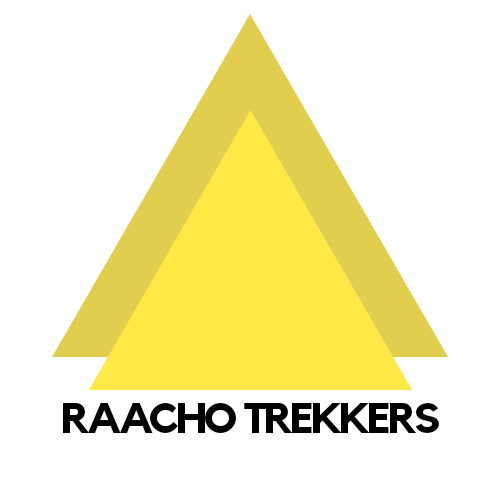
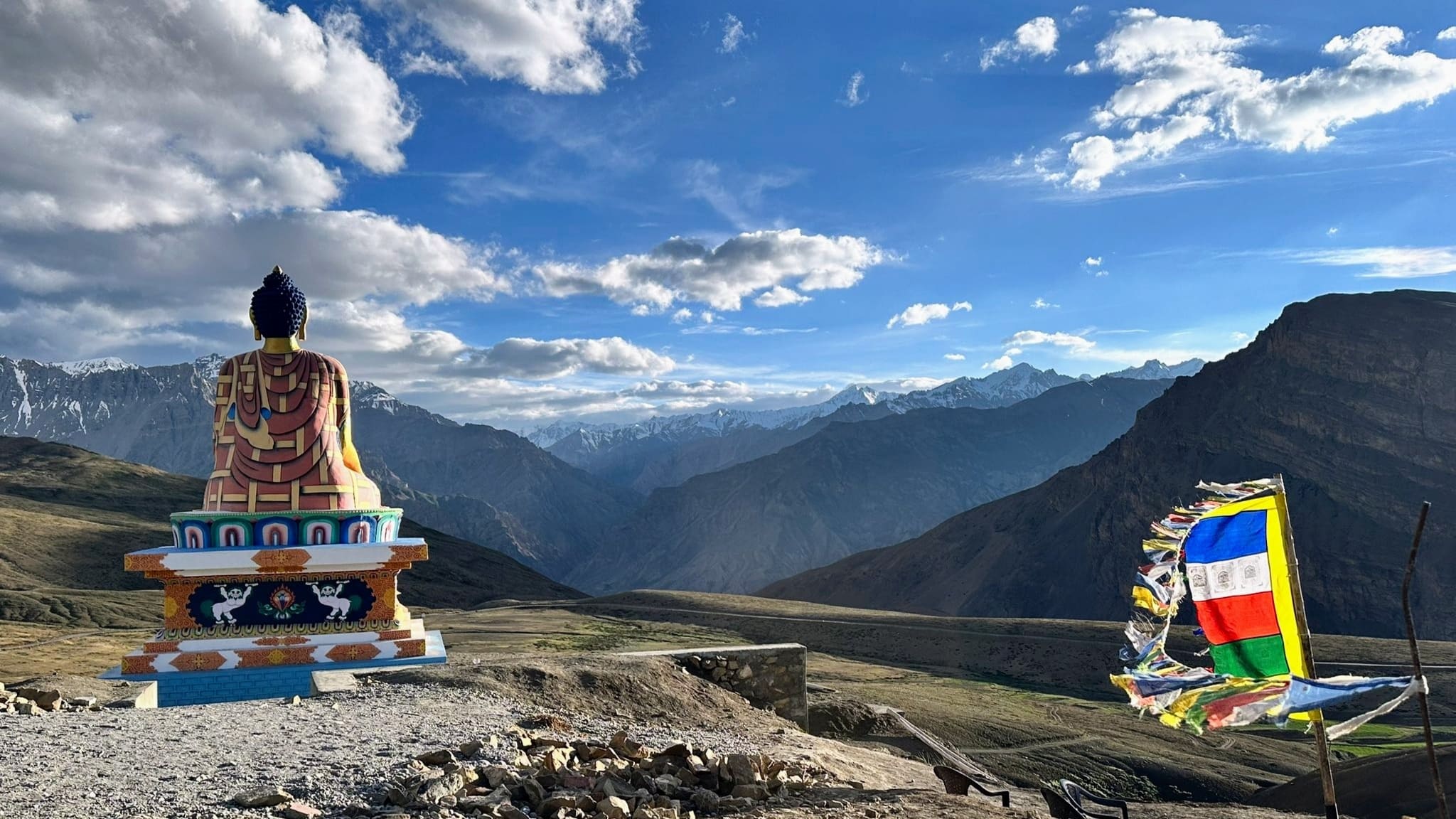
Leave a Reply